By the end of 2019, IATA forecast Oman’s aviation industry will have grown 40% over a three year period — a promising statistic, that itself is helping drive aviation growth in the region. The flag carrier, state-owned airline of the Sultanate of Oman, Oman Air, is often the ‘quieter’ voice of the Gulf aviation scene, with a belief that its route towards aviation success lies in being a niche player in a globally competitive market.
While the airline isn’t attempting to compete on a ‘super-connector airline’ scale (unlike its Gulf neighbours, Emirates and Qatar Airways), the airline is fast growing, operates to over 50 cities in the Middle East, Asia, Europe and Africa, all while being incredibly premium-focused. The national airline has invested heavily in its onboard products, including First Class — which is somewhat of a rarity, these days.
Oman Air currently operates a fleet of Airbus A330s, Boeing 787-8 and 787-9s, along with Boeing 737s (including the new 737MAX), and Embraer 175. It’s in the middle of a fleet strategy review, which will see the airline retire its Embraer 175 aircraft, and replace some Airbus A330s — with a newer, larger long-haul jet, either the Airbus A350 or Boeing 787-10.

After on-going negotiations between Oman Air and Airbus and Boeing, I can now exclusively reveal that Oman Air is set to order Airbus A350 XWB’s, as part of the Omani carriers’ continued investment in its long-haul operations, and partial A330 fleet replacement. Oman Air will aim to sign a purchase agreement for an A350 XWB aircraft order by the end of the year.
For Oman Air, the decision to order the A350 XWB means the airline is able to benefit from the ‘common type rating’ shared between the Airbus A330 and A350 XWB. It means that pilots who are qualified and current on Oman Air’s A330s can already commence their preparations to take the A350 XWB’s controls by undergoing “differences training” only.
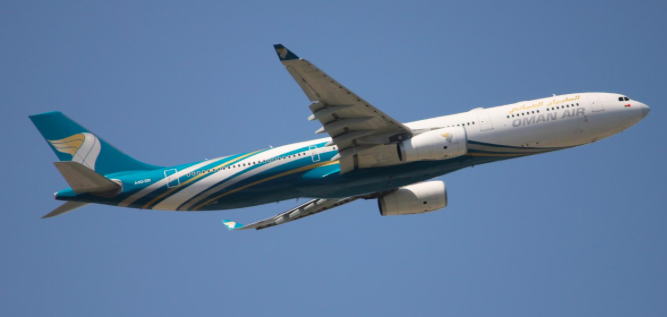
Additionally, it facilitates the creation of a pool of pilots who can fly both the A330 and A350 XWB in a single-fleet flying (SFF) concept, giving the airline increased scheduling and rostering flexibility, which in turn — helps to reduce flight delays.
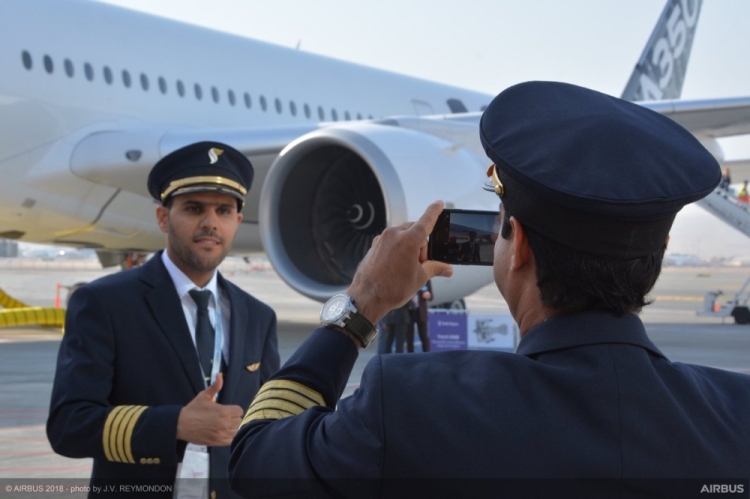
The common type rating approval is a significant reduction of cost for the Omani carrier, as the “differences training” does not necessitate the use of a ground-based full-flight-simulator, and allows a 65% reduction in pilot training time – to only eight days – versus a standard transition course.
Airbus has consistently highlighted the strong relationship it wants to maintain with Oman, and the A350-1000 stopped in Muscat on a three-week demonstration tour to the Middle East and Asia-Pacific regions, earlier this year.
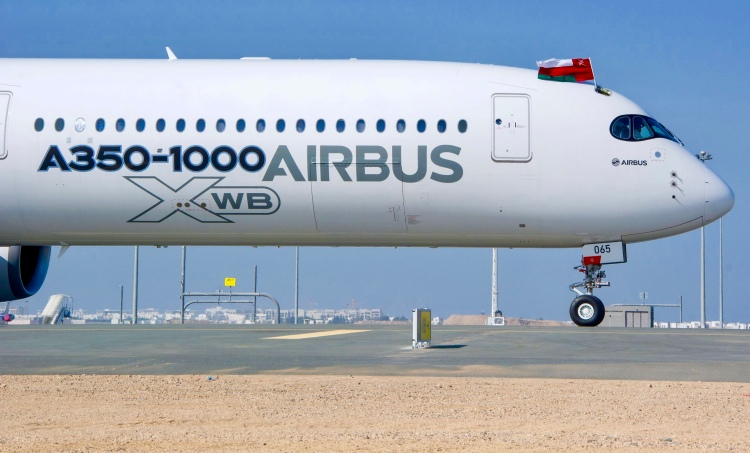
Stakeholders from Oman’s aviation industry were invited onto the aircraft, and Airbus executives spent time showcasing the A350-1000 XWB’s capabilities, cabin design & more.
The A350 XWB is the latest Airbus long-haul jet and comes in two variants: the A350-900 and the larger A350-1000 — both already in service with Oman’s Gulf neighbour, Qatar Airways (the worldwide A350-1000 XWB launch customer).
The A350-1000 is longer than the -900 by 7 meters. Both share the same engines, the Rolls Royce Trent XWB, but those installed on the A350-1000 have a higher take-off thrust of 97,000 lb each, versus 93,000lb on the -900 version.
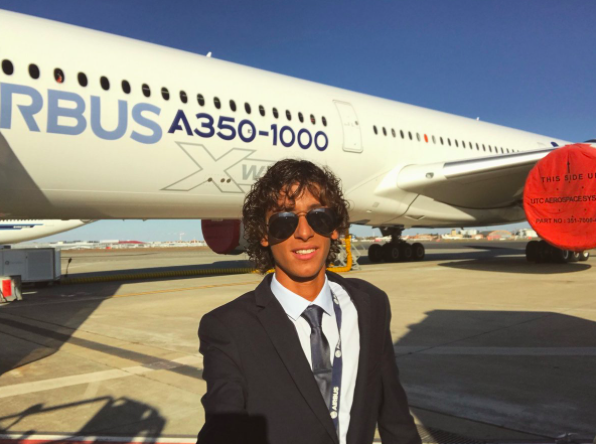
The -1000 can carry more fuel since it has a much larger tank in the centre of the fuselage, carrying 158,791 litres of fuel, versus 140,795 litres on the -900 — but it can’t fly nonstop as long as the -900, as the jet is (unsurprisingly) heavier.
For Oman Air, the added fuselage length of the A350-1000 XWB means the jet may be better suited (over the -900), given Oman’s continuous investment in premium cabin products. The carrier is one of the few in the world still investing in new First Class designs — including just this year, on the Boeing 787-9. While many airlines have chosen to limit their Boeing 787-9s with business class, Oman Air has equipped the cabin with stunning First Class suites.
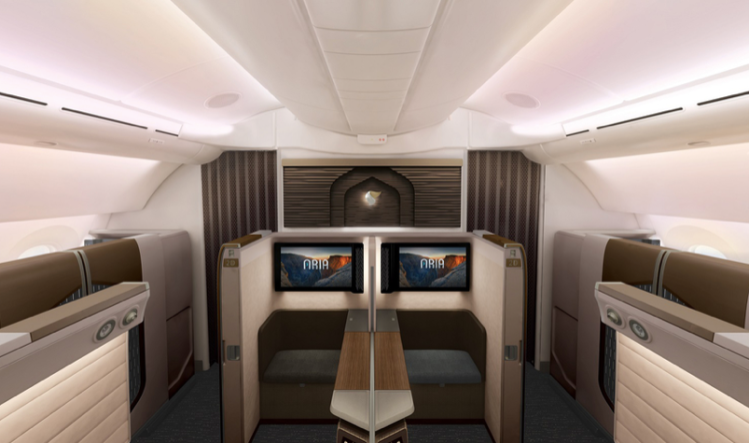
Oman Air would like to introduce the A350 XWB aircraft from late-2020, or early 2021, and while the airline is still accumulating heavy losses (of over $300 million), the Sultanate’s government remains committed in its investments in Oman Air — this year the carrier will receive another $200 million from the state. The airline has postponed its breakeven target to around 2024.
Furthermore, in the last few weeks, Oman Air has formally applied to the U.S. Department Of Transport, seeking authority and a foreign air carrier permit in order to enable the Omani flag carrier airline to launch non-stop flights between Muscat, Oman and the United States.

The application to the Department Of Transport is somewhat aligned with the upcoming long-haul aircraft order announcement — and both the A350-900 and A350-1000 would be able to operate non-stop between Muscat and the U.S. Muscat also has the added benefit of being slightly cooler, compared to Doha and Kuwait, and there shouldn’t be any payload restrictions on flights operating in the heart of summer.
It’s already been a significant year for Omani aviation. At Oman Air’s home in Muscat, a new $1.8 billion terminal at Muscat’s International has already opened its doors to passengers. The new terminal raised the capacity up to 20 million passengers per year and is equipped with the latest technology to accommodate newer jets such as the A350. The total number of passengers at Muscat International Airport grew by 9.8% to 11.4 million in the first nine months of 2018, over the same period of last year.
While Oman Air is yet to sign the purchase agreement, the airlines’ current decision to pursue with an A350 order comes at a time when its UAE flag carrier neighbour, Etihad Airways, is set to cancel a significant amount of ordered A350s, given the struggling state of the Abu Dhabi carrier. With Etihad Airways continuing to decline, Oman Air, along with its Kuwaiti counterpart, Kuwait Airways, both look set to fill part of the premium ‘gap’ being created by the UAE carriers’ continuous cutbacks.
Unlike the other Gulf carriers, Oman Air is very well known for its steady (perhaps too steady) growth, and this week saw the airline resume flights to the Maldives, and the start of flights to Moscow. In addition to Oman Air’s plans for US flights, the airline intends to use its future fleet to open up new links between Muscat and China, Hong Kong, as well as to increase its presence in India — subject to Indian government approval, which remains restrictive.
Final Thought
As Oman Air prepare to embark on a new chapter with a newer long-haul fleet, the current decision to pursue with the A350 XWB means the airline will become the latest Gulf airline to operate one of the world’s newest long-haul jets.
Oman Air is famous for its impeccable cabin design and attention to detail, and many regard the airline as one of the most underrated carriers in the world.
Much like the Sultanate of Oman, the airline adopts a more reserved, humble approach to its visibility — but armed with new cabins, new fleet plans and expanding routes, Oman Air is aiming to strengthen its position as a global airline.
Once a purchase agreement has been signed, and deliveries commence — Oman Air will have most of the world’s newest commercial aircraft in its fleet (including 787-9, A350 XWB, 737MAX), a remarkable prospect for a relatively smaller flag carrier airline.